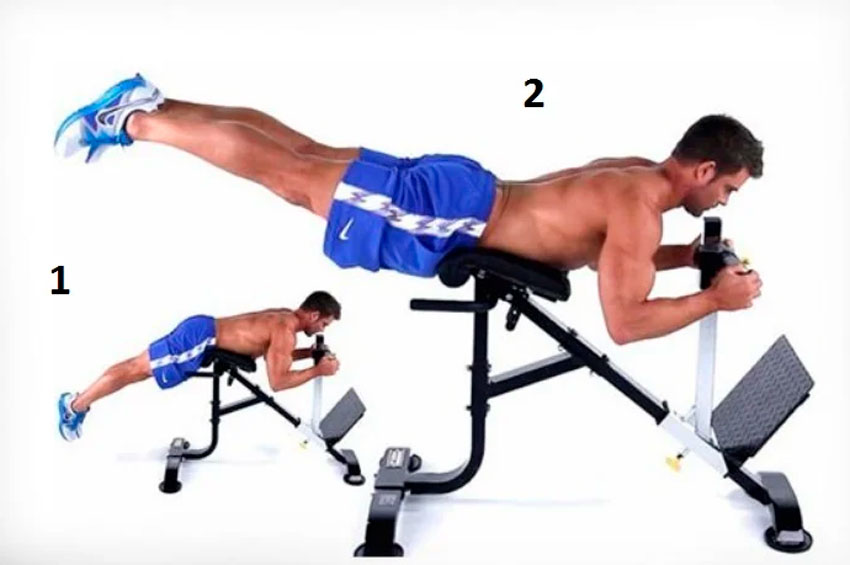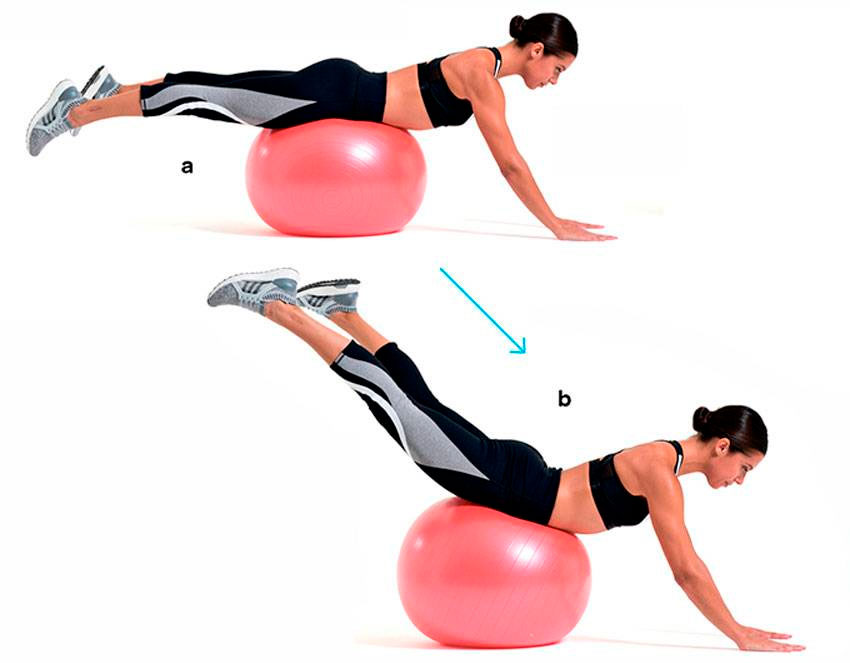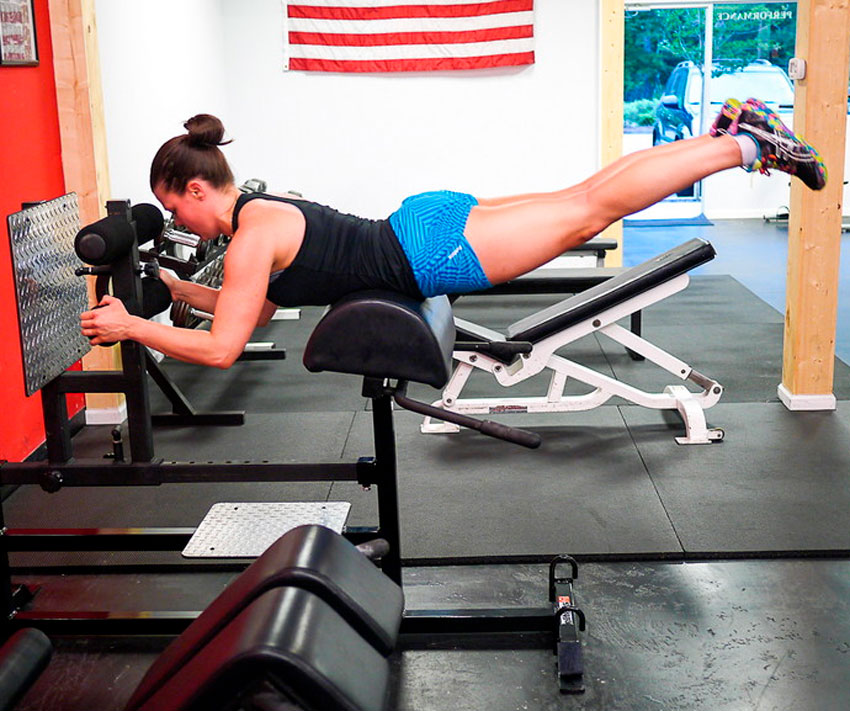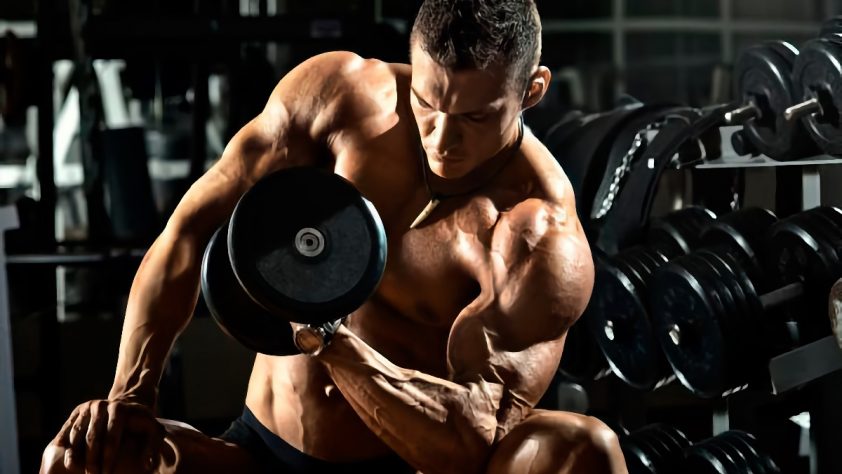Reverse hyperextension was invented by American powerlifter Louis Simmons. He was looking for a way to rehabilitate the lumbar spines of his wards, and “bonus” to pump up the biceps of their hips and buttocks. These muscles help in the deadlift, and with Louis’ approach it took a lot of work to keep the athletes healthy. After all, he trained only the strongest and his Westside gym is still the Mecca of the strongest people in the United States. Louis also came up with the first “machine” for reverse hyperextension – a simulator that allowed you to raise your legs from the floor, and not the body with fixed legs. The machine loaded the athletes’ hamstrings and buttocks and created additional resistance. In modern gyms, there is not everywhere a reverse hyperextension simulator, so many do the exercise on a regular bench without trying to change any of its parameters.
Pros and cons of exercise

This is one of the exercises that develop the hamstrings and glutes. It allows you to both gain muscle mass and get rid of certain painful sensations that follow a person leading a sedentary lifestyle.
The advantages of this exercise are:
- prevention of hernias in the lumbar spine, pinched nerve, sciatic nerve inflammation and problems with the hip joints;
- strengthening the muscles of the hamstrings and buttocks, when using sufficient weights, exercise can serve as one of the factors of hypertrophy. It is not recommended to only increase the load by using the cable of the cable machine if a beginner is doing. In this case, it is better to put on a weighting cuff;
- increasing the tone of the long muscle of the back, preparation for heavy basic exercises
Reverse hyperextension is one of the few movements that really prepares you for basic exercises and can be used to rehabilitate injuries such as the lower back and spine. For rehab work, a coach and doctor should be contacted, and beginners can simply gradually incorporate reverse hyperextension into their training plan.
The disadvantage of the exercise , or rather, the peculiarity of the starting position, is that a special simulator is needed for high-quality work out of the hamstrings and buttocks. You can, of course, get by with the usual bench for hyperextension and lie on it “vice versa”, or even perform the exercise on an incline bench. But in fact, this is not the best option if you need to load more muscles.
Some technical mistakes can be made in the exercise. But frankly, this is not the most difficult movement in terms of technology to be so worried about them. Beginners learn it quickly enough.
Shifting the load on the buttocks
In a normal “straight” extension, the long back muscles and hamstrings work more, rather than the gluteal muscles. If the weight is lifted with the legs in the plane of the lower back, and not with the hands, the gluteal muscles are involved in the work more than when the body is lifted. The loin is unloaded. With reverse hyperextension, “gluteal tricks” such as lifts with a round back, putting on a fitness elastic band and other similar things become unnecessary.
Reverse hyperextension technique: 6 options
Reverse hyperextension in the simulator

- You will need a trainer for the OGE or a GHR machine. You need to lie with your face to the handles, grab them with your hands, place your hips on a support;
- Lower your legs down, fix them by the cushion of the simulator, having previously set the available weight;
- Straighten the legs at the hip joint, concentrating mentally on the work of the buttocks, and not on the static tension of the back;
- Bring your legs back down smoothly;
- At the top, do not throw your legs above the plane of the back;
- Keep your hands stable, do not change their position.
Reverse hyperextension on the bench

- You will have to lie face down, position the bend of the hip joint on the cushions of the bench so that your legs can freely fall down, and your hands can grab the leg braces;
- Further, the feet are torn off the floor, so that it is possible to freely extend the legs in the hip joint;
- The legs are raised to the plane of parallel to the thigh with the floor;
- Then they go down to the floor, and the approach is repeated again.
On the bench press

- An ordinary bench is taken, a slope of 30 degrees is set;
- The hips are positioned so that the bend of the hip joint is directly at the top of the bench;
- The body goes down, the seat is gripped by the hands;
Biomechanical movement resembles conventional reverse hyperextension; - The legs go down due to flexion at the joint, and rise up;
- the exercise is repeated the required number of times.
On fitball

- Considered a sophisticated option, but only used in fitness. It is necessary to position the fitball in front of a support that you can grab with your hands;
- Lie on the fitball with your stomach;
- Due to the tension of the muscles of the buttocks, tear the legs off the floor and lift them up;
- Hands at this time are held by the support, and do not allow to roll off the ball;
- The planned number of repetitions is performed, ideally, the legs should not touch the floor;



